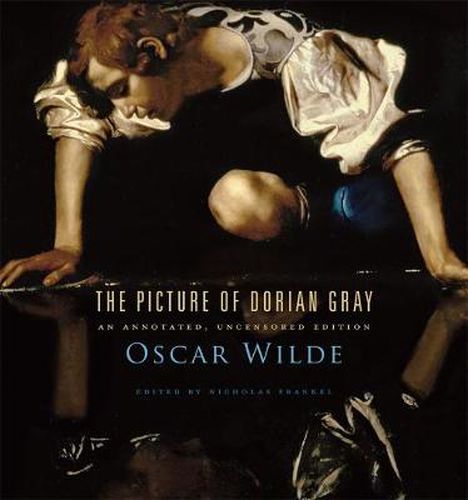Readings Newsletter
Become a Readings Member to make your shopping experience even easier.
Sign in or sign up for free!
You’re not far away from qualifying for FREE standard shipping within Australia
You’ve qualified for FREE standard shipping within Australia
The cart is loading…






The Picture of Dorian Gray altered the way Victorians understood the world they inhabited. It heralded the end of a repressive Victorianism, and after its publication, literature had-in the words of biographer Richard Ellmann- a different look. Yet the Dorian Gray that Victorians never knew was even more daring than the novel the British press condemned as vulgar,
unclean,
poisonous,
discreditable, and a sham. Now, more than 120 years after Wilde handed it over to his publisher, J. B. Lippincott & Company, Wilde’s uncensored typescript is published for the first time, in an annotated, extensively illustrated edition.
The novel’s first editor, J. M. Stoddart, excised material-especially homosexual content-he thought would offend his readers’ sensibilities. When Wilde enlarged the novel for the 1891 edition, he responded to his critics by further toning down its immoral elements. The differences between the text Wilde submitted to Lippincott and published versions of the novel have until now been evident to only the handful of scholars who have examined Wilde’s typescript.
Wilde famously said that Dorian Gray contains much of me : Basil Hallward is what I think I am, Lord Henry what the world thinks me, and Dorian what I would like to be-in other ages, perhaps. Wilde’s comment suggests a backward glance to a Greek or Dorian Age, but also a forward-looking view to a more permissive time than his own, which saw Wilde sentenced to two years’ hard labor for gross indecency. The appearance of Wilde’s uncensored text is cause for celebration.
$9.00 standard shipping within Australia
FREE standard shipping within Australia for orders over $100.00
Express & International shipping calculated at checkout
The Picture of Dorian Gray altered the way Victorians understood the world they inhabited. It heralded the end of a repressive Victorianism, and after its publication, literature had-in the words of biographer Richard Ellmann- a different look. Yet the Dorian Gray that Victorians never knew was even more daring than the novel the British press condemned as vulgar,
unclean,
poisonous,
discreditable, and a sham. Now, more than 120 years after Wilde handed it over to his publisher, J. B. Lippincott & Company, Wilde’s uncensored typescript is published for the first time, in an annotated, extensively illustrated edition.
The novel’s first editor, J. M. Stoddart, excised material-especially homosexual content-he thought would offend his readers’ sensibilities. When Wilde enlarged the novel for the 1891 edition, he responded to his critics by further toning down its immoral elements. The differences between the text Wilde submitted to Lippincott and published versions of the novel have until now been evident to only the handful of scholars who have examined Wilde’s typescript.
Wilde famously said that Dorian Gray contains much of me : Basil Hallward is what I think I am, Lord Henry what the world thinks me, and Dorian what I would like to be-in other ages, perhaps. Wilde’s comment suggests a backward glance to a Greek or Dorian Age, but also a forward-looking view to a more permissive time than his own, which saw Wilde sentenced to two years’ hard labor for gross indecency. The appearance of Wilde’s uncensored text is cause for celebration.